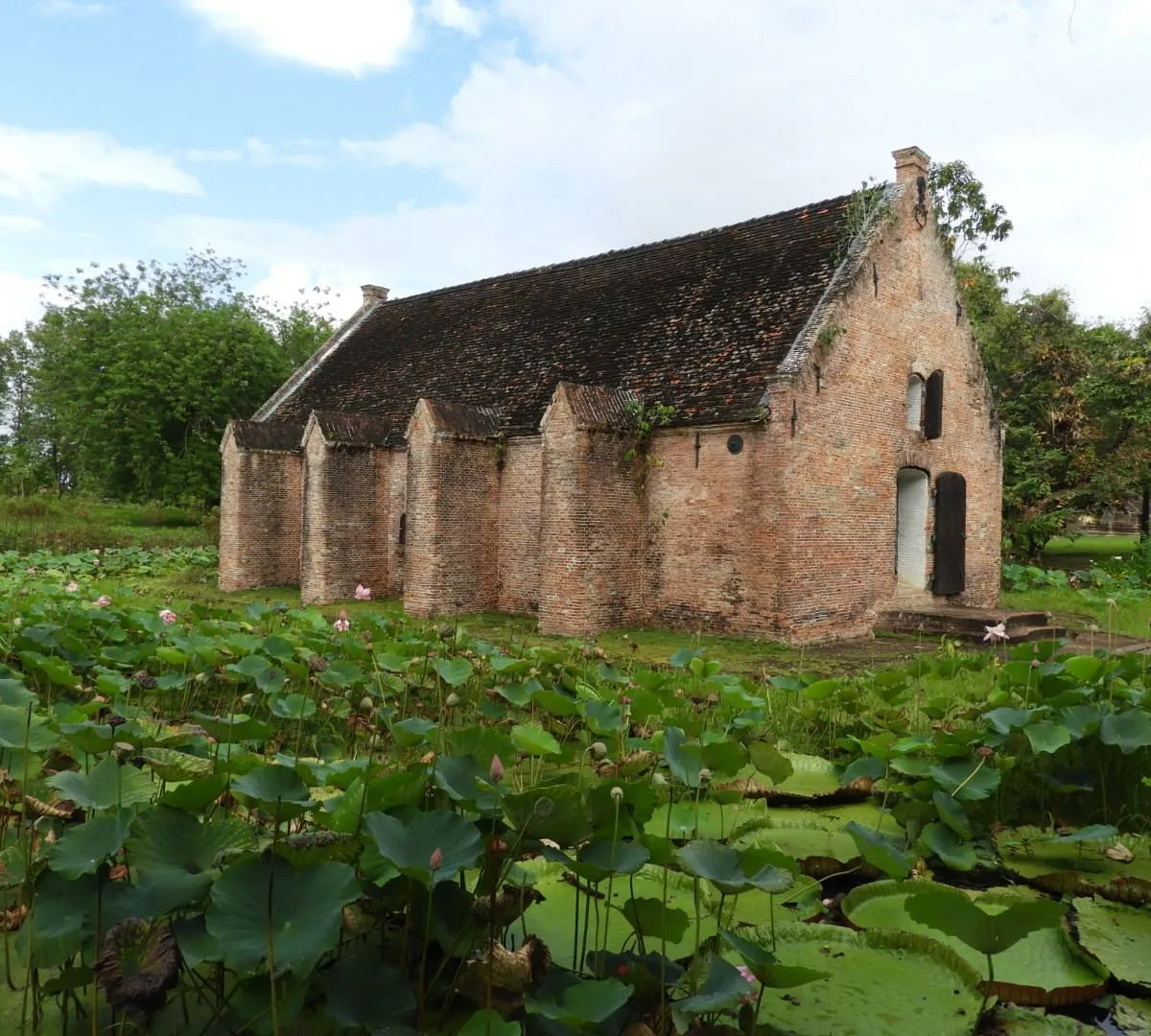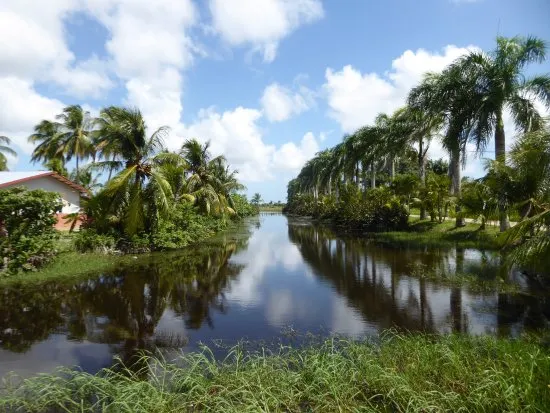1. Overview & Address of the Place
Peperpot Nature Park is a tranquil and biodiverse nature reserve located in Meerzorg, just across the Suriname River from Paramaribo. Covering around 820 hectares, the park features regenerating forests, historical plantation remnants, and diverse wildlife, making it a perfect spot for nature lovers and history enthusiasts.
Location – Google Maps link
2. History
- Colonial Origins: Originally established as a coffee and cocoa plantation in the early 1700s.
- Heritage Structures: Many colonial-era buildings and plantation machinery remain on-site.
- Enslaved Labor History: Worked on by enslaved Africans during the Dutch colonial period.
- Ceased Plantation Activities: The plantation operations ended in 1998, allowing forest regeneration.
- Protected Reserve (2009): Officially designated a nature reserve by the Surinamese government.
- Biodiversity Hub: Hosts collaborative biodiversity research by national and international institutions.
- Educational Resource: Frequently used for school trips and environmental education.
- Community Conservation: Local communities are involved in eco-tourism and conservation efforts.
- Discovery Center: A visitor center was established to enhance public awareness and education.
- WWF Support: The park has received support from international conservation organizations.
3. What Makes Peperpot Nature Park Popular?
Peperpot is popular for its blend of biodiversity and colonial heritage. Visitors enjoy nature walks through regenerating forest, observing native wildlife like monkeys and exotic birds, and exploring the historic ruins of the old plantation—all in one peaceful, accessible location just outside Paramaribo.
4. Overall Ratings (1 to 5 Stars)
Rating: ★★★★☆ (4/5)
A unique combination of nature and history. Some facilities may need better maintenance, but the experience is both enriching and educational.
5. Weather
The park experiences a tropical rainforest climate with temperatures averaging 30°C (86°F). The wet season runs from December to July, peaking from April to July. August to November is the drier, more comfortable season for visits.
6. Nearest Five Hotels
- Royal Torarica Hotel – Upscale stay with scenic river views.
- Torarica Resort – Resort-style lodging with lush surroundings.
- Hotel Krasnapolsky – Centrally located with modern amenities.
- Hotel Palacio – Colonial charm with contemporary comfort.
- Eco Torarica – Budget-friendly with a sustainable approach.
7. Timings
Open daily from 8:00 AM to 5:00 PM. Mornings and late afternoons are best for wildlife viewing and cooler walks.
8. Time Required to Visit
Plan for 2 to 3 hours for a casual visit. Allocate 4 to 5 hours for birdwatching or a guided eco-tour.
9. Entry Fees & Ticket Booking Details
A small entry fee is charged at the gate. Guided tours and special activities like night walks are available for an additional cost and can be arranged at the Discovery Center.
10. Things to See & Do
- Nature Trails: Walk the Mopentibo and Felter trails for diverse forest ecosystems.
- Birdwatching Tower: Observe rare species from a 12-meter-high vantage point.
- Wildlife Spotting: See monkeys, sloths, reptiles, and even anteaters.
- Historic Structures: Explore plantation ruins and old colonial buildings.
- Photography: Capture lush greenery and historic beauty.
- Educational Tours: Join guided experiences for deeper understanding.
11. Best Time to Visit
The best time is from August to November when it’s dry and trails are more accessible. Visit early morning or late afternoon for wildlife activity and cooler temperatures.
12. Nearest Parking Spots
On-site parking is available at the main entrance. Arrive early during weekends and holidays to secure a spot.
13. Tips for Visitors
- Wear sturdy shoes – Trails can be muddy.
- Carry water – Stay hydrated.
- Use insect repellent – Protection from mosquitoes is essential.
- Apply sunscreen – For outdoor sun protection.
- Respect wildlife – Avoid feeding or disturbing animals.
- Stick to trails – For safety and conservation.
14. How to Reach the Place
- By Car: Cross the Jules Wijdenbosch Bridge from Paramaribo and follow signs to Meerzorg.
- By Public Transport: Taxis and minibuses from Paramaribo can take you to Meerzorg.
- By Bicycle: A scenic and eco-friendly route for adventurous travelers.
15. Nearby Attractions to Combine for the Visit
- Fort Nieuw Amsterdam – Historic Dutch military fort and museum.
- Commewijne River – Great for river cruises and plantation tours.
- Palmentuin – A relaxing palm garden in central Paramaribo.
- Presidential Palace – Iconic architecture and historical significance.


